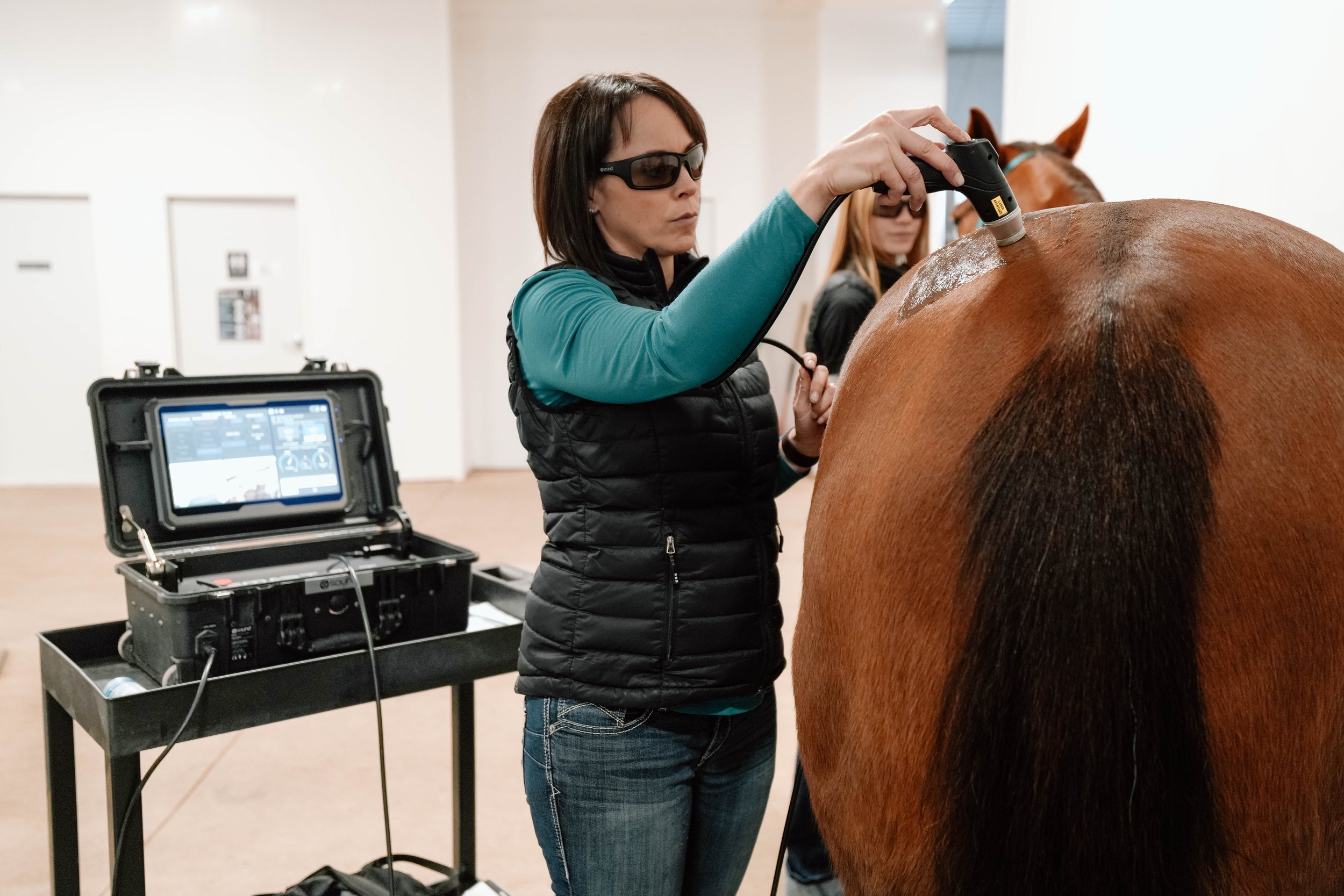Assessing the Performance of Laser Therapy in Horse Therapy for Injury Rehab
The analysis of laser therapy's performance in equine injury rehabilitation rests on numerous factors, consisting of recuperation time, pain mitigation, and cells regeneration. Scientific researches suggest significant improvements in conditions like tendonitis and osteoarthritis, connected to improved cellular function and raised ATP manufacturing. Veterinarians regularly observe remarkable end results with laser therapy compared to traditional approaches, positioning it as an essential component in equine care. Nonetheless, the necessity for constant monitoring and personalized therapy strategies can not be overemphasized. What particular clinical proof supports these cases, and how do vets execute these methods in practice?
Understanding Laser Treatment
Laser treatment has actually become a pivotal tool in veterinary medicine, particularly in the treatment of equine conditions. Understood for its non-invasive nature and efficacy, laser therapy includes the application of particular wavelengths of light to stimulate tissue repair and reduce swelling. This restorative modality is significantly preferred for its capability to accelerate the recovery procedure in horses struggling with a selection of bone and joint injuries and chronic problems.
The key mechanism behind laser treatment is its ability to improve mobile functions. Furthermore, laser treatment advertises vasodilation, improving blood flow and oxygen distribution to broken tissues, thus quickening healing.
In equine medication, laser treatment is particularly helpful for conditions such as tendonitis, osteoarthritis, and wound healing. The method is admired for its pain-relieving residential properties, permitting horses to restore wheelchair and feature extra swiftly. Vets also appreciate its minimal side effects compared to other therapy methods, making it a reliable and safe option for equine care.

Just How Laser Treatment Works

Upon absorption, these photons cause a collection of biochemical adjustments, boosting mitochondrial feature and bring about raised adenosine triphosphate (ATP) manufacturing. This surge in ATP speeds up cellular metabolic process, promoting tissue fixing and regrowth. In addition, laser therapy modulates inflammatory feedbacks by impacting cytokine levels and reducing oxidative stress and anxiety, consequently easing pain and swelling.
Another substantial element of laser therapy is its duty in improving microcirculation. The therapy advertises vasodilation, improving blood circulation and oxygen shipment to damaged cells (Equine Therapy). This helps with the elimination of cellular particles and supports the spreading of fibroblasts and collagen synthesis, vital for wound recovery
Scientific Evidence
The efficiency of laser therapy in equine therapy has been confirmed through numerous medical studies, showcasing its restorative potential across a variety of conditions. Numerous controlled tests and observational researches have recorded considerable renovations in tissue repair service, pain reduction, and total rehab timelines. For example, a research study performed by Turner et al. (2012) demonstrated that steeds treated with low-level laser therapy (LLLT) for ligament injuries showed accelerated recovery contrasted to those obtaining traditional therapies. The study highlighted a marked reduction in swelling and improved collagen development.
Likewise, research by Johnson and coworkers (2015) concentrated on equine muscle injuries, disclosing that laser treatment considerably expedited muscle fiber regrowth and lowered muscular tissue tightness. Scientific check it out assessments have actually revealed that laser treatment can relieve chronic problems such as osteo arthritis.
Veterinarian Insights

Vets additionally value the versatility of laser therapy. She points out that laser treatment can be customized to the particular requirements of each equine, making certain optimum results.
In addition, veterinarians value the ability to integrate laser therapy with other therapy techniques. This multimodal approach can improve general therapy effectiveness, offering an extensive service for equine rehab. Such endorsements from skilled specialists emphasize the expanding approval and application of laser therapy in equine medicine.
Practical Factors To Consider
A vital facet of carrying out laser treatment in equine treatment involves understanding the practical factors to consider that ensure its efficacy and safety and security. It is vital to select the ideal laser gadget, as various kinds vary in wavelength, power, and penetration deepness. Veterinarians must be fluent in these specifications to tailor therapy procedures efficiently per injury kind
Furthermore, the regularity and period of laser therapy sessions require cautious preparation to make the most of healing benefits while minimizing any type of potential adverse results. Regular tracking of the steed's reaction to treatment can lead essential modifications in the therapy regimen. Developing a secure and controlled environment throughout treatments is likewise necessary to avoid unintended exposure to laser emissions, which could hurt both the steed and the handler.
Educating and accreditation of employees carrying out laser therapy are vital to ensure correct technique and to copyright safety and security requirements. click for more info Additionally, preserving exact documents of each session, including laser setups and observed end results, is essential for reviewing the total performance of the therapy and for making data-driven choices.
Verdict
Laser treatment has actually additional resources arised as a reliable method in equine injury rehab, using considerable advantages in recovery time, pain alleviation, and cells recovery. Scientific research studies highlight considerable improvements in conditions such as tendonitis and osteo arthritis, credited to improved cellular function and increased ATP manufacturing. Vet monitorings affirm these searchings for, highlighting remarkable results compared to traditional treatments. For ideal results, continuous surveillance and customized treatment protocols continue to be crucial in leveraging the complete capacity of laser therapy in equine care.
Comments on “Equine Therapy Programs: Changing Lives One Experience at once”